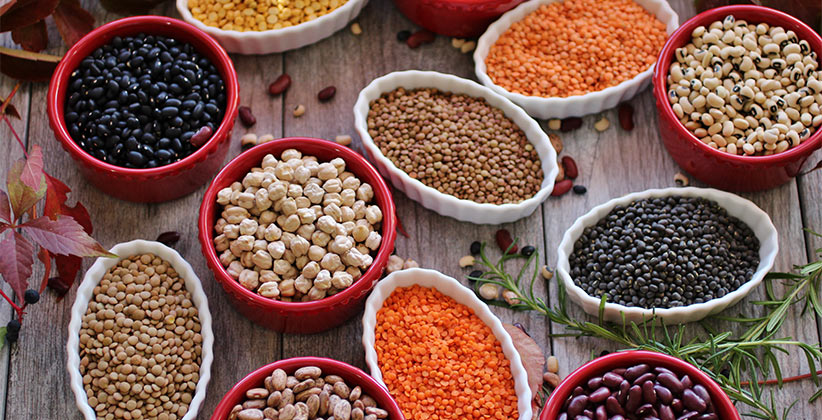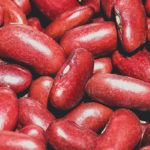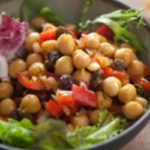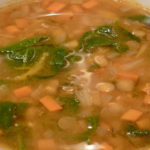What is a legume?
Legumes encompass a wide range of edible nuts and vegetables, this includes peas, beans, lentils and even peanuts, sugar snaps and snow peas are in the legume family. These protein packed little bundles make the perfect ingredient to use in recipes all year round. A gorgeous fresh summer bean salad, a deep and delicious cassoulets in the winter any time of year is perfect to add these to your diet. Versatile, nutritious and very inexpensive particularly the dried peas, beans and lentils these legumes are the perfect way to add tons of protein and vitamins into your diet.
Nutrition Limelight!
Virtually all Food Guide’s will recommend that we eat legumes and include them in our diet regularly. They are a fantastic source of protein, fibre, iron and B vitamins and make a great low fat meat alternative or extender.
Fibre is something that most of us just don’t get enough of in our diets. Fibre helps to lower our cholesterol, keep us regular and it helps control our blood sugar levels.
B vitamins are critically important to the bodies’ efficient use of the fat, protein and carbohydrates that we eat in our daily diets. Lentils and beans are immensely rich in vitamin B6 and folate, which is a very important mineral for women thinking of getting pregnant.
Iron is of course a mineral that the body needs to make blood and it comes in two forms heme and non-heme. Non-heme is absorbed best by the body when it is combined with vitamin C rich fruits and vegetables so don’t forget to combine your beans or lentils with fruit and vegetables so the body can better absorb the iron.
The Flavourful World of Legumes
There are dozens of different legumes to choose from, and virtually every culture, every country has their own special recipe for preparing them. These are just a sampling of the types of legumes you have to choose from to add to your diet.
Chickpeas, ceci or garbanzo beans are a medium sized, creamy soft yellowy beige coloured legume. They have a beautiful creamy texture when pureed and make they are the main ingredient in a spread like Hummus. Added to soups, stews or cooked dishes a whole chickpea will keep its shape and add heartiness to the dish. Chickpeas are used extensively in Mediterranean cuisine and they are fantastic added to salads and cold side dishes.
Red kidney beans are red and obviously, kidney shaped. They are traditionally added to chillies or rice dishes. They do tend to be soft and can get a little mushy if you use canned but dried kidney beans have a much firmer texture when soaked and boiled.
Black beans are an oval shaped midsized bean. They have a black skin and a creamy interior. They hold up really well when added to hot dishes such as chilli or a good stew. They have a meaty texture and made great refried beans or add them to rice or good vinaigrette and they make a great bean salad…
Black-eyed peas are medium sized, oval beans that are cream coloured with a black dot. Considered a good luck dish when eaten on New Years by southerners, black-eyed peas are also added to many soups, stews, Jamaican beans, and rice dishes.
Cannellini beans are large and have a traditional kidney shape. With a slightly nutty taste and mild earthiness, they have a relatively thin skin and tender, creamy flesh. They hold their shape well and are one of the best white beans for salads and ragouts.
Great Northern beans are smaller than cannellinis and perfect for any number of recipes. Their texture is slightly grainy, with a nutty, dense flavor. .
Navy beans are small and oval and cook relatively quickly, they are also used for baked beans in many recipes, are great in stews, soups, and pureed for bean dips.
Split peas are small dried peas that naturally split into two pieces. They are usually yellow or green and when cooked will soften and blend into your soup or stew. Yellow splits are used in the traditional Quebec Pea soup and green in the Split Pea and Ham soups.
Lentils come in a wide variety of shapes and sizes. Generally speaking, they are disc shaped and quite thin. Red, orange and yellow lentils are used a great deal in Indian cooking and make wonderful dahls and creamy currieries. Green and brown lentils when properly cooked hold up very well and are a fantastic addition to soups, stews, dips and side dishes. Lentils also make great summer salads and warm side dishes.
Mung beans are small, green legumes and most commonly used in Indian or Chinese cuisine. In Indian cuisine, they are used for dahls and known as moong dahl and often in Chinese cuisine; they are sprouted and used as bean sprouts for stir-fries.
Adzuki beans are small, round, reddish-brown in East Asian cuisine they are commonly used sweetened as ice cream or a paste for buns and sweet pastries. They can also be sprouted and used in stir-fries.
While peanuts are a legume, there are differences. Peanuts have a much higher fat content and a thinner skin around the seed. They are used all over the world to provide a much-needed protein in many diets. They can be boiled or roasted and added to salads as a crunchy topping, East Asians make great peanuts sauces that are used to marinade and flavour chicken. There are dozens of recipes for African peanut soup and in Thai and Malaysian cooking, they are often added as a topping or used pureed to add thickness and flavour to a dish.
On a side note, don’t worry about eating legumes if you are allergic to peanuts, this tends to be a very specific allergy and peas, lentils and beans have not showed them same types of allergic reactions.
Cooking with peas, beans and lentils.
Beans, lentils and peas in a can.
- To prepare these simply rinse really well in cold water to remove the salt and water and then simply add to your dish when cooking.
Dried Beans
- Place the beans etc into a colander and look through them for small stones that might have got caught up in the processing of them. Rinse and wash with cold water.
- If you like to presoak your beans, (lentils and peas for the most part do not need any soaking). Simple cover the beans with cold water and soak overnight.
- Once your beans have soaked simply rinse and add to a fresh pot. Fill a large pot with cold water and add the beans, they should be well covered and the water quite deep. Bring the water to a boil and then stir, lower the heat to a good simmer, cover the pot and let cook for a couple of hours.
- Some foam may gather on the top of the water, it is not harmful but you can discard it simply by scooping with a spoon. Cook until tender. Depending on the bean, this may take 1-2 hours.
- You don’t need to presoak dried lentils or split peas. They are smaller and cook faster.
Ten easy ways to include legumes into your diet
- Add canned or jarred lentils, or beans into your favourite soup or stew recipe.
- Most beans make a great dip or spread, think hummus with chickpeas but you can replace the chickpeas with any other variety of beans available. Simply blend the beans into a puree with some garlic, good olive oil and lemon juice add the types of herbs and spices you like to kick it up a notch or two and serve with tortilla chips, crusty baguette or pita breads. This can also be used as a spread for sandwiches and wraps to give some flavour and replace high calorie items like mayonnaise.
- Use lentils mixed with vegetables to create veggie patties to replace a hamburger.
- For the picky eaters in the family that won’t touch a bean or lentil simply puree them and use for a soup or stew thickener – they will never know.
- Use some world recipes and create dishes like Cuban Black Beans and Rice, or Jamaican Rice and Peas to try new flavours.
- Try replacing your ground hamburger in chillies and soups with a selection of beans and vegetables to reduce your red meat consumption.
- Fancy something different create a white bean and chillie stew with chicken and jalapenos.
- Investigate some Indian dishes lentil dahls and curries are a great addition to any menu. Why not have an entirely Indian vegetarian evening.
- Make your own refried beans with leftover pinto or black beans. Instead of using pork fat simply add some flavour to the beans with cumin, garlic, a little salt and some hot peppers and cook the beans in good oil until they go soft and creamy.
Summer bean salads are excellent and can be made easily and quickly using canned beans mixed with great colourful vegetables and vinaigrette dressings.
Looking for a Canadian pulse exporter? Give us a call at +1 (416) 548-5901
Extracted from: https://www.eatrightontario.ca/en/Articles/Cooking-Food-Preparation/Cooking-with-Legumes.aspx





Comments are closed.